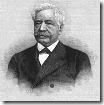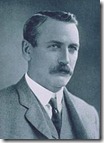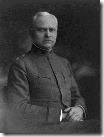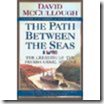I feel a guilty need to read my share of books which are outside my area of expertise (I have friends who are substantially more prolific readers than I – they make me feel guilty).
Once in a while, I read a book with unexpected overlap with my professional experience (which, of course, is part of the point).
I’d like to share one I read recently.
Path Between The Seas
The Path Between The Seas by David McCullough describes a good portion of the history of the construction of the Panama Canal.
It covers the early motivation to build the canal, efforts to build consensus, and stories of success and failure.
There are additional fascinating details related to political, social and medical issues surrounding the endeavor.
When it comes to large engineering projects, there are few that top the Panama Canal. But I’d like to distill a few details which seem to recur in projects regardless of scale.
Evangelizing
 Ferdinand de Lesseps, having developed the Suez Canal, was instrumental in evangelizing support for the Panama Canal.
Ferdinand de Lesseps, having developed the Suez Canal, was instrumental in evangelizing support for the Panama Canal.
However, there’s some evidence that Lesseps’ evangelism was less affected by actual project status than it could have been.
There are some stories of him reporting progress substantially more favorably than he had observed firsthand, and also collecting estimates from expert subordinates and “adjusting” the estimates downward.
Hmm.
Lesson: charisma is an amplifier; projects need evangelists, but to be effective they need to be pointed in the right direction
Getting It Going
 John Stevens was an early chief engineer during the second major phase of canal construction. He was very hands-on and beloved by his workers for that among other reasons.
John Stevens was an early chief engineer during the second major phase of canal construction. He was very hands-on and beloved by his workers for that among other reasons.
Stevens really seemed to Get The Thing Going, and had the foresight to improve the industrial and medical infrastructure to the point that canal construction was actually feasible. He pragmatically stated
… the problem is one of magnitude and not miracles.
Lesson: every project needs someone to turn the dream into reality
Building It
 George Goethals followed John Stevens on the project. He was not particularly well liked at first, but ultimately earned deep respect from his workers.
George Goethals followed John Stevens on the project. He was not particularly well liked at first, but ultimately earned deep respect from his workers.
Joseph Bishop, a New York reporter, recalled of Goethal’s relations with workers that
They were treated like human beings, not brutes, and they responded by giving the best service within their power
He brought organization, efficiency, and discipline to the project, and ultimately was the one who Built The Damn Thing.
Lesson: every project needs someone who can Build The Damn Thing
Simplicity
The construction of the Panama Canal featured advancements in engineering and medical science. It was an early example of electrical control systems (and a major project for General Electric).
I’d like to highlight one feature that caught my attention from a work flow perspective. It involves the central control panel for the canal.
From the book, pp 602-603
The genius of the system, however, was in the elaborate racks of interlocking bars concealed from view beneath the board. For not only was the operator able to see the entire lockage process in miniature and in operation before him, but the switches were interlocking-mechanically. Each had to be turned in proper sequence, otherwise it would not turn.
In brief, the control board implemented a mechanical state machine which rendered operator errors impossible.
That is, designed to be inherently simple, bug-free and foolproof – I like it.
Lesson: it takes hard work to make things simple, yet is often worth the effort
This blog post is a reprise of an article originally written in September 2009.

